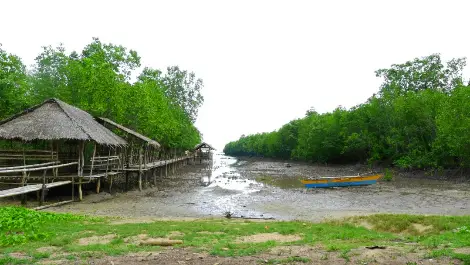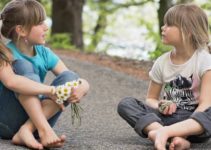Effective collaboration between communities, the government and non-government organizations can help restore the environment. Here is the story of a successful family-based afforestation project.
There are many stories of successful community-based reforestation projects but few describe successful afforestation projects. Intrigued by a colleague’s story of an afforestation program that thrived for many years in Aborlan, a municipality located 69 kilometers south of Puerto Princesa, I embarked on a trip together with colleagues to see how the community did it.
But before you read the story of a successful afforestation project I narrate below, I see it necessary to define the terms reforestation and afforestation. What is the difference between these two terms? Unless you understand the difference, you cannot fully appreciate the significance and uniqueness of this story.
What is the difference between reforestation and afforestation?
For those unfamiliar with terms that relate to environmental or natural resource matters, the term reforestation is more easily understood as opposed to afforestation. These two terms are operationally defined, that is, defined in relation to this story on afforestation.
Reforestation is planting trees once again to deforested sites or former forests that have been logged over, overharvested of lumber or burned due to a forest fire. Afforestation is converting once unproductive or bare lands into forested areas able to support biodiversity, increase carbon sequestration and capture, provide for the natural resource needs of man, among others.
The Case of Family-Based Mangrove Afforestation
Here is a condensed version of the successful afforestation project published in a local journal[1].
The coastal community of Tagpait, Aborlan undertook a mangrove afforestation project and sustained it for many years. Their accomplishment is quite unique because they used a family-based approach in achieving the objectives of the project.
The community-based mangrove afforestation project commenced through Japan-based Organization for Industrial Spiritual and Cultural Advancement International (OISCA) International. With the help of dedicated Filipino community organizers who trained in Japan through OISCA, the community members led by their chairman, started planting mangroves in a section of the coast virtually without mangroves. The place was used mainly by the local folks for gleaning and fishing activities.
OISCA provided the funds for logistics such as hauling of seedlings and boat hires. On the other hand, the community members contributed to the project by voluntarily gathering the mangrove propagules necessary for their 25 x 400 meter (1 hectare) lots. The Department of Environment and Natural Resources (DENR) awarded Contracts of stewardship agreement to families in 1991.
The stewardship agreement provided that the grantee may receive technical assistance and extension services in the management of the stewardship area. These services, to be provided by the Department of Environment and Natural Resources (DENR), Department of Agrarian Reform (DAR), Department of Agriculture (DA) and other government or private entities, include the procurement of planting materials, harvesting and marketing.
Seventy-eight families started to reforest the muddy portion of the coast on a one hectare per family basis. They nurtured the mangroves to maturity. Simultaneously, they established a sanctuary for fish and other marine species. The community members managed the mangrove plantation, making sure that the area is free of disturbance.
The Outcome and Benefits of the Mangrove Afforestation Initiative
After twenty years of family-based mangrove management, the families reaped the benefits of their labor. Lush growth of mangroves, bisected by an allocated section of open space for fishers to gain access to the sea, characterizes the area. Species of Sonneratia spp., Rhizophora mucronata, Rhizophora apiculata, Lumnitzera racemosa, Xylocarpus granatum, among others species of mangroves grew at sizes of 5 to 10 cm in diameter (Figure 1).

Now, community members harvest timber from sturdy mangrove species of Xylocarpus sp. and poles of Rhizophora spp. Every time they harvest wood or timber, they immediately replace this by planting a corresponding number of mangrove propagules.
Aside from being able to satisfy the community members’ lumber needs, they have now a sustainable source of nutritious food from wildlife supported by the mangrove forest. Occasionally, people come around and trap or gather crabs, shrimps, fish, edible shells, tamilok (a shipworm of the genus Teredo which is considered a delicacy by the local folks), among others.
Beside the open area for boats and along the mangroves, the families constructed a pathway made of bamboo, sturdy mangroves and planks of wood. It is here where hook-and-line fishers and gleaners pass through. This also serves as a pathway for visitors, who come to visit the man-made forest and enjoy the food served by the community members. They charged corresponding fees for the use of cottages and services.
Future Outlook
The use of mangroves by the Tagpait fisherfolk adheres to the principle of the sustainable utilization. However, encroaching individuals from other communities sneak and cut some trees for their own use, threatening forest integrity. There is a felt need among the fisherfolk to address this problem.
Despite this threat, the mangrove afforestation in Tagpait, Aborlan demonstrates that long-term benefits can be derived from long-term initiatives to enhance the coastal ecosystem. Taking the family-based approach in creating an ecosystem that mimics a natural ecosystem is an effective tool in engaging communities towards the goal of natural resource conservation. The family has “property rights” over the resource thus prevent its abuse. The economic benefits that arise from a protected ecosystem further strengthen the need for people to use the natural resources in a sustainable manner.
Replication of the community’s experience in Tagpait, Aborlan in other places will undoubtedly revive portions of the coastal zone where marine biodiversity thrives. The mangrove trees provide shelter not only to dugongs, sea turtles, monitor lizards, molluscs, among others but also to local and migrating bird species. Mangroves are a powerful form of erosion control, buffer against storms or even tsunami, clean the air through carbon sequestration, filter sediment-laden runoff.
Source:
1. Regoniel, P. A., and E. B. Pacañot (2012). Family-based mangrove afforestation in Tagpait, Aborlan, Palawan:
Sustaining the drive towards sustainable development. Palawan State University Journal. 5, 8-13.

